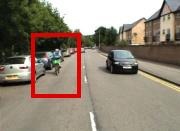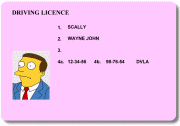Another feed on that previous story about the possibility of new drivers facing bans on carrying passengers comes from Sky News.
I wanted to mention it because it refers to Drive IQ. I’ve written about this group before. To be honest, I can’t figure out how they fit in with the BTEC anymore, because they describe themselves as “100% not-for-profit”, and yet from what I remember they used to charge a pretty hefty sum for access to the full range of learning materials and were forever looking at ways of modifying the pricing structure to increase the dire take-up rate. The last thing I saw from them suggested that you could sign up for the course at a reduced price, but had to pay extra if you wanted a certificate at the end of it! Their website still refers to “Drive IQ Pro” (delivered by an ADI), and that definitely used to involve money changing hands and I can’t see how that has changed. However, Drive IQ is being pushed in schools so perhaps that facet of it really is not-for-profit, even though funding has to come from somewhere. It’s all very confusing – and road safety shouldn’t be.
The mother of a girl killed in a road accident (young, unlicensed male driver) is backing the Drive IQ programme. She says:
When it comes to young people being safer in cars, lack of knowledge can kill. I know that only too well.
Although I feel for her, she is sadly misguided in this analysis, particularly when you consider that the driver of the car her daughter was a passenger in hit a tree at 80mph!
Lack of knowledge isn’t the problem – every driver since the dawn of time (and I’m thinking as far back as carts drawn by animals here) has had to deal with lack of knowledge, gradually building up both that and their experience until they become competent drivers.
The problem is that whereas once upon a time most teenagers wouldn’t have dreamed of stealing a car and driving illegally for fear of getting a clip round the ear, today’s crop contains far too many who wouldn’t think twice about doing it regularly. Teenagers in the past knew it was wrong, and avoided doing things that were wrong. The dividing line between right and wrong back then was clearly defined by appropriate punishments.
These days they grow up without any such divisions being built into them. That’s what the problem is. Not a lack of knowledge, but a complete inability to deal with that lack. The driver of that car the girl was killed in almost certainly wasn’t doing 80mph because he was inexperienced or “didn’t know” – he was doing it because he was a juvenile prat.
As I mentioned in a recent post on Client-centred Learning, the DSA has now introduced its own syllabus for dealing with issues relating to the higher levels of the GDE Matrix. This is much more closely aligned with the driving test, simply by virtue of being under the DSA umbrella.
The biggest problem is that no course can force any ADI to cover anything other than the absolute bare minimum required to pass the driving test. Similarly, unless the Law changes, nothing can stop an increasing number of learners wanting to pass in the shortest possible time by spending the least possible amount of money. Ironically, those most likely to want to spend the least amount of money to pass their tests are inexorably drawn towards those ADIs most likely to only cover the barest minimum of the syllabus (i.e. the ones who charge stupid low prices, and so who cannot afford to teach the full syllabus). And so the downward spiral continues.
The only flaw with the DSA syllabus – and the same flaw exists to even greater degrees with other initiatives – is that ADIs will not be forced to implement it.
And the “government” shows further naïveté when Louise Ellman, chair of the Commons Transport Select Committee, says:
There should be support for voluntary activities, perhaps in schools, perhaps in driving clubs to develop positive attitudes towards driving before people actually take their tests.
It goes far, far deeper than that.
 It was the fact that people are still finding the blog on the search term “bsm on bbc watchdog” (or similar) that made me write this – harping on and on about a TV show that was shown over two years ago. Since then, BSM has gone bust and been bought up by the AA, and any issues that were reported on Watchdog back then are totally irrelevant now (and they were pretty irrelevant then). Oh, and then there’s the old one about “how much the BSM franchise costs” – that’s another one that is ancient history now that the AA is operating it, yet still gets bandied about as current. And then there are the repetitive comments about the HPT (usually by the same people), which was also introduced a long time ago. So…
It was the fact that people are still finding the blog on the search term “bsm on bbc watchdog” (or similar) that made me write this – harping on and on about a TV show that was shown over two years ago. Since then, BSM has gone bust and been bought up by the AA, and any issues that were reported on Watchdog back then are totally irrelevant now (and they were pretty irrelevant then). Oh, and then there’s the old one about “how much the BSM franchise costs” – that’s another one that is ancient history now that the AA is operating it, yet still gets bandied about as current. And then there are the repetitive comments about the HPT (usually by the same people), which was also introduced a long time ago. So… One of their main arguments was that it isn’t “real world” and is just a “video game”.
One of their main arguments was that it isn’t “real world” and is just a “video game”. will change to comply with new European Union rules.
will change to comply with new European Union rules.